|
https://ift.tt/2GXmDCH
How to Combine Facebook Ads and Content for Better Results https://ift.tt/2H3Qs4D
Wondering how to build connections that improve conversions? To explore strategic ways to combine content and Facebook ads, I interview Keith Krance. More About This ShowThe Social Media Marketing podcast is an on-demand talk radio show from Social Media Examiner. It’s designed to help busy marketers, business owners, and creators discover what works with social media marketing. In this episode, I interview Keith Krance, a Facebook ads expert. He’s host of the Perpetual Traffic podcast, founder of Dominate Web Media, and coauthor of The Ultimate Guide to Facebook Advertising. Keith explains how to create content and calibrate your budget for each phase of the customer journey. You’ll also learn how to apply Keith’s Facebook ads formula to lower your ad spend. How to Combine Facebook Ads and Content for Better Results featuring insights from Keith Krance on the Social Media Marketing Podcast. Share your feedback, read the show notes, and get the links mentioned in this episode below. Listen NowListen now: Play in new window | Download Subscribe: Apple Podcasts | Android | Google Play | Stitcher | TuneIn | RSS Here are some of the things you’ll discover in this show: Facebook Ad ContentKeith’s Story Keith became a Facebook ads consultant in a roundabout way. He grew up in a small town thinking you had to be a doctor or lawyer to be successful. However, he didn’t want to go to school for the years it took to enter those professions. Instead, he went to the University of North Dakota to become an airline pilot and, four years later, was flying for a regional airline. However, as a young pilot, Keith realized he didn’t have the seniority to be home for Christmas or Thanksgiving. After a friend gave him the book, Rich Dad, Poor Dad, Keith started his entrepreneurial journey, which he feels is a true reflection of his personality. In 2003, while he was still flying, he started investing in real estate. After doing well with real estate, he began investing in local franchise businesses. By 2005, he was out of the real estate game and became a franchisee of two different businesses. He had a couple of different partners and five different locations. Over the next five years, Keith focused on his franchise businesses and became interested in Facebook ads around 2010. He was already learning about the digital marketing world when his girlfriend told him about Facebook. He was amazed by what he could do with Facebook ads compared to billboards, for which he paid $10,000 per month to advertise in a mediocre location.
From that point, Keith went all-in on Facebook and quickly learned how to run successful ads. Due to changes in the franchise business, Keith eventually transitioned completely out of that industry and decided to focus entirely on helping other people learn how to advertise on Facebook. Keith began building his consultancy by networking and getting results for local clients. At a consulting event for Perry Marshall, Keith connected with a client who hired him because he had self-published a book. About 5 months later, word had spread that Keith had cut a client’s lead cost by 68%, and Perry Marshall’s team reached out to Keith about working together.
After Keith had worked with Perry for a while, Perry asked him to coauthor The Ultimate Guide to Facebook Advertising, which is now in its third edition. Keith also started the Perpetual Traffic podcast with Digital Marketer and was working on growing his agency. Since then, Keith found a partner to run the agency so he could focus on the education and consulting certification side of the business. Listen to the show to hear more details about Keith’s transition from piloting airplanes to running an agency. The Big Mistake in Facebook Advertising In Facebook advertising, the big mistake people often make is focusing on the wrong stuff. They don’t take time to truly understand human psychology or the Facebook and Instagram platforms. To help people focus on the right things in their ads, Keith suggests thinking of Facebook and Instagram as online versions of a party or a business networking group. Pretend you’re a brand ambassador for your business, and your job is to build relationships and educate people in your local community. For example, maybe you sell green home-cleaning products. You want to educate people on how to keep their houses free from toxins or how to make homemade laundry detergent. By educating people, you start to build relationships. Only after you educate people and build these relationships do you begin talking about your own products and the needs they meet in the market. If you sell services, like digital marketing consulting, and are getting your business started, maybe you’re attending a local networking group. You learn quickly not to expect to get a brand-new client the day you shake somebody’s hand or to try pitching your services 30 seconds after you meet someone. That’s not how building relationships works in the real world. At a business networking event, if all the attendees are business owners, only 5% to 10% of those people might be actively searching for a new digital marketing consultant. However, although the vast majority of people might not be actively searching for a new consultant, they might not yet realize they could be doing things better.
Also, the people at the networking group have different personality types or make buying decisions in different ways. Some are impulse buyers. Others are competitive and want the best. Some are logic-based and make decisions quickly. Then you have the slow decision-makers, process-driven people, or humanistic people who listen to their hearts. However, a lot of people running Facebook or Instagram ads target only those fast decision-makers who have intent to buy right now. They’re focused on those 5 or 10 people who are actively searching for green home-cleaning products or a consultant. In doing so, the people running these ads miss audiences that would potentially buy their products or services in the future. The reasons advertisers miss these potential customers vary. They’re trying to sell too quickly. Sometimes, they give up before they start or they’re focused too heavily on the targeting, optimization, number of ads they should run, and the ideal size of their audiences. Keith emphasizes that people can be a lot more successful if they don’t give up too quickly on their social marketing. They think it doesn’t work for their business because they don’t take the time to develop the right message. Also, people who focus only on direct-response, hardcore conversions burn out their audiences. Instead, Keith suggests focusing 90% of your energy on what kind of offer you should send to people, and how you can build trust and deliver value. Think about how an ad can show somebody that you can help them. Even if someone doesn’t click your ad that offers help, you’re still subconsciously building a relationship with them.
Ads that build trust and offer value help you build custom audiences, too. If your ad is a video, you’re building a warm custom audience, probably pretty cheaply. If you have an ad that’s not video, you can still build custom audiences of people who click your ad. As you run ads that deliver value, you’ll hear statistics and figures meant to help you calibrate ad content. However, don’t let these figures cloud the importance of talking to your audience as you would in a face-to-face conversation. For instance, a Facebook partner manager or rep might tell you to use short videos because attention span is short and average video engagement time might be 15 seconds. Although this data is accurate, focusing on it can cause you to miss the audience you want to reach. Say you have a Facebook video ad based on a blog post. Whether that video is 8 minutes or 1 minute long, you’ll lose about 95% of people after the first 15 seconds, no matter what. But the 5% who keep watching will watch to the end, and those are the people you want to attract. Listen to the show to hear my thoughts on the customer journey. Keith’s Formula for Scaling Your Business Keith’s scaling method is based on his BSC Triangle, which is upside down like a sales funnel and divided into three sections. The top section is for branding, goodwill, and awareness. Keith recommends spending about 20% to 30% of your advertising budget on this category of ads, which build warm audiences that you can later target in conversion-focused campaigns.
Initially, you need to be careful putting money into these ads because you might not get a return on investment (ROI) right away. However, in the long-term, these ads will be game-changers for you. The second section is conversions. These ads generate conversions with content and a call-to-action strategy. You spend 50% to 70% of your budget on generating conversions with ads that reach cold, as well as warm, audiences. At the bottom of the triangle, you focus on generating sales using smart retargeting. These ads might show the second step in your sales funnel or bring people straight to an order form. If you sell physical products online, you might show dynamic ads. Spend 10% to 20% of your budget, or as much as you can, on this section because these audiences generate the biggest ROI. With this formula, you build up the smart retargeting audience by having a strategy in those top two layers. Branding Ads: A branding ad might feature a blog post, YouTube video, or Facebook Live that delivers value to people. You’re basically spending a little money to promote content that you would share on social media. For these ads, Keith recommends choosing two or three pillar pieces of content that provide an overview and set up your products in the best way. Find something you’ve published if you can.
If you’re a numbers person, the key performance indicators (KPIs) for these ads are cost per impression or cost per video view. You want to know how many people you’re reaching. You’ll also find that cost per video view is a lot lower than the KPI for a conversion campaign. Conversion Ads: A good conversion campaign that builds goodwill and educates is a game-changer. Keith has at least seven or eight clients who have been running a conversion ad for more than 2 years. That ad has taken these clients from $230,000 per year to $4 million per year, or from $500,000 to $20 million in ecommerce sales. These clients include coaching and agency clients. For a conversion ad, video offers a long-term benefit. It will build subconscious connection with people, as well as generate video views. A long story-based ad can work, too. Whatever the format, the ad must educate, demonstrate, inform, and/or entertain. To help remember these qualities, Keith uses the acronym EDIE. Your ad content doesn’t need to have all these qualities; see if you can apply even just one or two of them. People often focus on ads that entertain or go viral, like the ads from Dollar Shave Club or Dollar Beard Club. A viral video blew up the company. However, other qualities are just as important. In the book, Contagious: Why Things Catch On, Jonah Berger talks about six reasons why things go viral. Two reasons that things go viral that are easy to forget are usefulness and making people feel knowledgeable. Sharing something that’s useful and practical makes people feel good. People also share things on social or tell their friends about something because it makes them feel like they know something that others don’t know. When Keith creates an ad or helps a client, he often thinks about those two reasons because he wants to create a message that people will want to share. Sharing not only builds more trust, but also tells the algorithm that people like your ad. The algorithm then rewards you with more impressions; cheaper clicks, views, and cost per conversion; and higher ROI or ROAS (return on ad spend). For a conversion campaign, the best ads are often content you’ve published because you created the content for YouTube or a blog post. To illustrate, Drew Canole from Organifi (a green smoothie) has a 6.5-minute video showing 11 superfoods and what they do for your body. At the end is a pitch. Drew says Organifi tastes great and provides the same benefit as the superfoods for less money than shopping at Whole Foods. He drinks the smoothie right on camera. He also mentions that Organifi has hundreds of Amazon reviews. Clicking the ad takes people to a sales page where they can subscribe to the product for $57 per month. If someone watches that video, even if they don’t watch to the end or click through, they learned about superfoods and might share the video. They may not even know a pitch appears at the end. This ad has been running for 2.5 years and has 30 million views among the different paid placements. VIDEO I ask if there’s a distinction between a branding ad and a conversion ad. Keith says the difference isn’t so much in the ad content. For example, a branding ad about superfoods might list only five foods and drop the pitch at the end. The important thing is how the branding ads and conversion ads work together to build your audiences. Initially, focus all your energy and budget on getting one EDIE element right. When you do this, you’re actually branding, creating goodwill, and building awareness. You’re connecting with a range of people, from those who aren’t aware of their problem to those who intend to buy your product. After launching the first ad, you build another similar ad with a different objective, such as website conversions instead of video views. With the conversion ad, you optimize based on purchases. When you do that, you win big. Facebook will really focus on people who are going to buy. They’ll do the heavy lifting for you. That’s why you focus all your energy on the messages and your offer. Say you run the video about the 11 superfoods with a video view objective. That objective tells Facebook to reach people who like to watch videos. When you do that, your ROI from that video won’t be very high, and your cost per conversion will probably be twice as high. However, your cost per video view might be two to five times cheaper. So you’re getting five times more reach.
When a 6.5-minute video is building goodwill, you might run it as a website conversions campaign. What Keith recommends is, instead of spending 100% of your budget on conversions, you spend 80% on website conversions and 20% on video views. The video views ad will reach those slow decision-makers who probably aren’t going to buy the first time or even in the first 7 days. Smart Retargeting Ads: You can do smart retargeting in a lot of different ways. Keith starts with a simple example. Say that you have a video or a long text ad that educates people about 11 superfoods and what they do for your body. Many people check out the ad, but they’re not buying. With smart retargeting, you might show another ad that’s shorter and more product-focused. In the product-focused ad, you can still dig into challenges and frustrations but focus on why your product is different and how it will help your audience solve their particular problem. Then the ad might link directly to the checkout or sales page, depending on your sales setup. Listen to the show to hear Keith discuss the long-term benefits of branding ads versus conversion ads. Audience Targeting For the smart retargeting ads, you make the targeting fairly narrow. Although the specifics depend on your ad, in the case of the product-focused superfoods video ad, you would target people who visited your sales or product page but didn’t buy.
For the branding and conversion ads, however, you make the targeting broader. Keith notes this point is super-important but is often misunderstood. People often think that for a branding campaign featuring a blog post or branding type of video, they need to target cold audiences. Then, for the conversion campaigns, they target people who visited their website or watched the video. Keith says that’s the wrong way to think about targeting and this approach is more complex to set up. Instead, keep the targeting simple because you want to reach that large portion of your audience who don’t have intent to buy right now but might later on. When you run a content-rich, great ad that really educates, tells a story, builds emotional connection, and generates conversions, you can put that ad in front of big, broad, cold audiences. But it’s also going to work well with your warm audiences. In other words, your conversion campaign needs to target cold and warm audiences, not just people who saw your branding ads. When you set up the ad campaign in Facebook Ads Manager, you separate the audiences into different ad sets. So you create one campaign with one ad set for all your warm audiences and another ad set for, say, all your local cold audiences. Then you have another ad set for all your lookalike interest audiences and one for your fans.
Those four main ad sets will drive everything. Imagine you turned a blog post into a long copy ad that might have a soft call to action, or maybe not. This ad is building goodwill and your audiences. Those audiences are mostly cold but you can also show the ad to warm audiences because you want those people to read your article, too. Keith calls the article or video you use in ads that target different audiences a pillar post. Some of his clients have only one, two, or three pillar posts. These posts are used in ads run on small budgets every day. If you put $20 per day behind a pillar post, the amount of reach that continues to rack up is amazing.
When you already have a big following on social media or get a lot of organic traffic, putting in a tiny bit of money grows your reach exponentially. For instance, Keith has helped content marketers build their entire brand by adding a small amount per day to their business, and everything tripled within a year. Listen to the show to hear how Keith would apply his formula to Social Media Examiner content. Keith’s Quilting Client Example To clarify how a business might use Keith’s approach, he shares an example of a client who sells a digital product that teaches people how to make quilts. This client promoted different pieces of content for branding, conversions, and smart retargeting. For branding, he had a Facebook Live that was about 45 minutes long and running as a video views campaign. He had another 2-minute video that was focused on selling and was also doing some retargeting. After looking at this client’s Facebook Live, Keith recommended using it to create a new website conversions campaign while continuing to run the Facebook Live as a video views campaign. Although the 45-minute Facebook Live had some soft calls to action, it was mostly building more branding, goodwill, and trust. The budget for these ads was small. With the two ads promoting the Facebook Live, Facebook targeted people who were going to watch videos and engage with the post, as well as people who would want to buy the client’s product, which cost $7.
The change eventually lowered the client’s ad costs while increasing his reach. The Facebook Live as a video views ad was costing him $19 per customer. After the change, his website conversion ad cost $8 per customer, or less than half the video views rate. But the video views campaign became four times cheaper. So the branding ad is now spending less money but reaching four times as many people. Listen to the show to hear how this client was featured in a hot seat in Keith’s elite coaching group. Discovery of the WeekWith Toggl, you can easily track your time spent on different tasks. Toggl is great for checking how much time you spend on tasks so you can be more efficient or for tracking time so you can bill clients accurately. After you log in to Toggl, you can start and stop on regular tasks. You can also add a new task by typing it into the app. If you forget to stop the timer on a task, you can correct it later.
Toggl is available as a mobile app for all platforms, as well as a Chrome or Firefox extension for your desktop browser. You can use the free version of Toggl to track your own time. For features like exporting reports or tracking teams, you can purchase an advanced version. Listen to the show to learn more and let us know how Toggl works for you. Listen to the show! Listen now: Play in new window | Download Subscribe: Apple Podcasts | Android | Google Play | Stitcher | TuneIn | RSS Key takeaways mentioned in this episode:What do you think? What are your thoughts on Facebook ad content? Please share your comments below.  Social Media via https://ift.tt/1LtH18p April 6, 2018 at 05:05AM
0 Comments
Leave a Reply. |
�
Amazing WeightLossCategories
All
Archives
November 2020
|



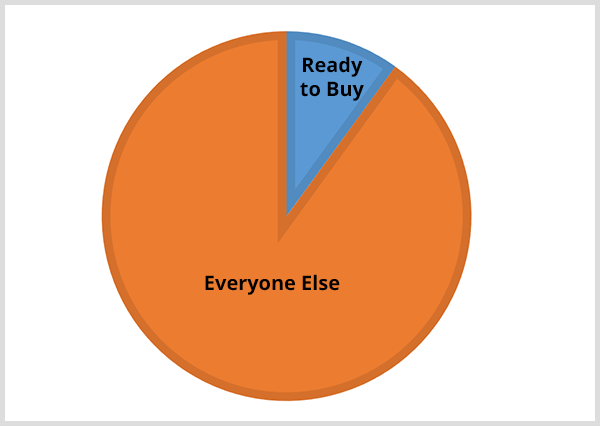
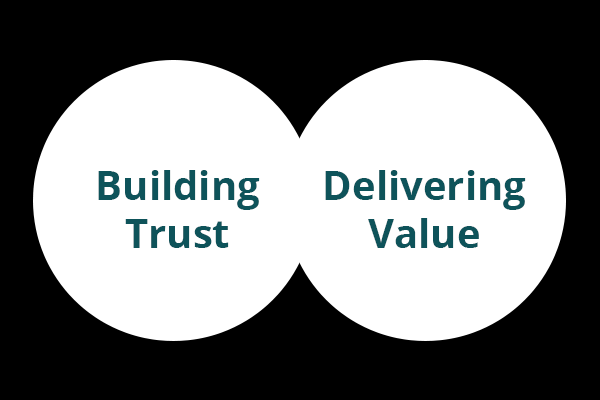

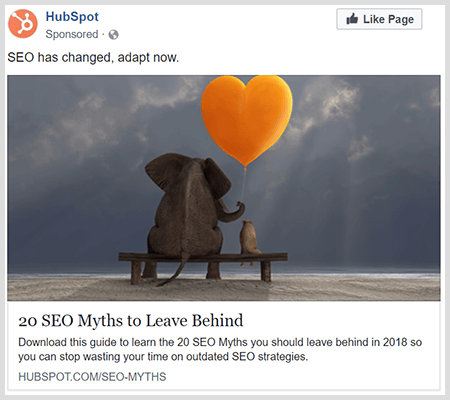



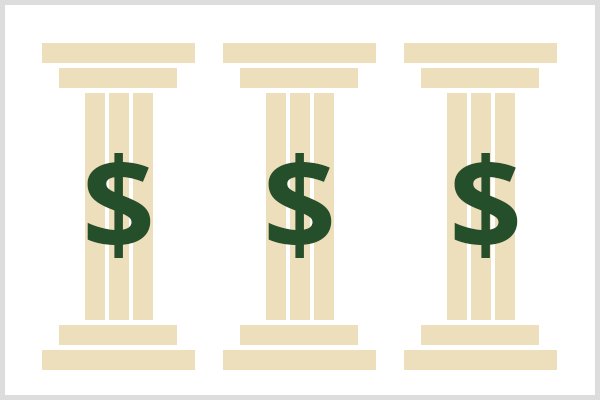

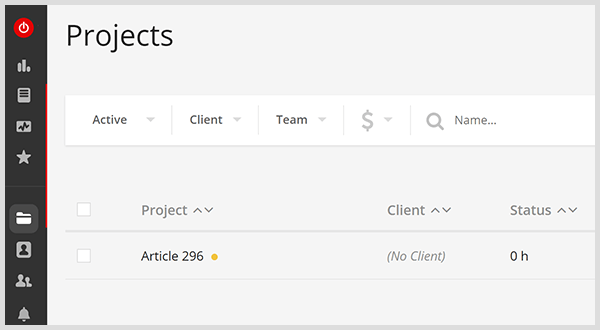

 RSS Feed
RSS Feed
